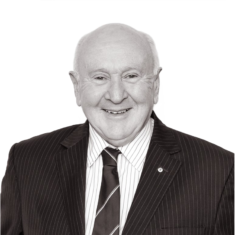Businesses beware – recent Ad Standards decisions suggest a crackdown on influencer promotions.
In February 2021, the Australian Association of National Advertisers (AANA) published a revised Code of Ethics (Code). Some businesses have already been called out for Code breaches.
The new Code requires that paid influencer posts are “clearly distinguishable” as advertisements. The latest Code revision removed the “relevant audience” test. Previously, the Code did not require that social media advertising (such as Instagram posts) bear explicit labels, such as “#ad” or “#paid”, if it would be clear to the intended audience that the content of the post was commercial in nature.
Businesses are at risk of being publicly named and shamed for Code breaches, with the AANA’s sister body and industry self-regulator, Ad Standards Australia, publishing consumer complaints and decisions regarding Code breaches on its website.
Who did not get an #instadream rose from Ad Standards?
In March, an Ad Standards panel determined that a paid Instagram post by #influencer Anna Heinrich was in breach of section 2.7 of the Code for not being a distinguishable advertisement.
The advert featured Heinrich in a “Runaway The Label” branded green dress, captioned: “Turning my apartment into a Runway [green heart emoji] Then back to my PJs I go! Wearing: @runawaythelabel”.
The Ad Standards Panel upheld consumer complaints that the content was not clearly distinguishable as an advertisement and required use of explicit wording or hashtags, such as #ad, “paid promotion” or “branded content”.
Runaway The Label did not respond to the Panel’s request for comment, nor did it modify or suspend the advertisement as requested. The decision and the business’ subsequent conduct have been detailed in a case report published on the Ad Standards website. The influencer has now amended the post to include the words “paid partnership”, but Ad Standards’ public indictment of Runaway The Label remains on its website.
Just two weeks after the Heinrich decision, an Ad Standards panel also determined that an Instagram post by Rozalia Russian was not clearly distinguishable as an ad. Russian posted an image of a woman’s hand holding a Tom Ford perfume bottle, captioned: “summer in a bottle @tomfordbeauty”. At the time of publication, Russian’s post remains unchanged.
Don’t get on the nose with Ad Standards – you won’t come up roses
Businesses using influencer marketing must be mindful of the new Code and its stricter guidelines in order to reduce risk of reputational damage. While all Ad Standards decisions are published on its website, complaints surrounding higher-profile influencers are more likely to reach mainstream media outlets. It is the advertiser, not the influencer publishing the ad, who will be the subject of the Ad Standards complaint.
While the Heinrich complaint has, owing to the amendments to her advertisement, been resolved, it is within the power of Ad Standards to escalate the Russian complaint if it is not rectified. This could result in Tom Ford International being subject to Australian Competition and Consumer Commission (ACCC) disciplinary action.
Don’t go #finsta: False or misleading influencer testimonials
In addition to Ad Standards’ name and shame and referral powers, advertisements amounting to misleading and deceptive conduct can draw the ire of – and penalties from – the ACCC.
Although it wasn’t an issue in the Heinrich or Russian cases, businesses should also be wary of publishing false or misleading testimonials.
A post including an influencer’s false testimonial or approval of a product may amount to a breach of Australian Consumer Law. For example, an influencer cannot testify to a product’s quality or benefits if they have not themselves tested the product.
In the case of a paid promotion, the offending influencer is a person representing a business. That business may have committed an offence under section 151 of the Australian Consumer Law and can be fined up to $1.1 million.
It is also an offence under section 151 for businesses to make false or misleading representations in general, and this should be carefully considered when generating collaborative content with influencers.
Take a social media business #selfie to ensure your policies are on fleek – then slay it
While it may seem social media and influencer marketing are a risky business, with planning and taking the time to ensure a few important things have been considered, it can be a lucrative platform for businesses looking to engage customers in specific target markets.
To ensure your business doesn’t raise the ire of Ad Standards, and gets the most out of your social media advertising, now is the time to:
- Review internal policies to ensure that your influencer advertising practises include using explicit wording or hashtags.
- Consider reviewing contracts with influencers to ensure your business can control the content (and captions) published by advertising partners.
- Ensure that influencer testimonials are only given by those who have actually tried the product being promoted.
If you would like advice on how the revised Code or Australian Consumer Law affects your business and advertising practices, please contact our Corporate & Commercial Team at Hunt & Hunt.
~ with Alexandra Culshaw, Graduate-at-Law


















